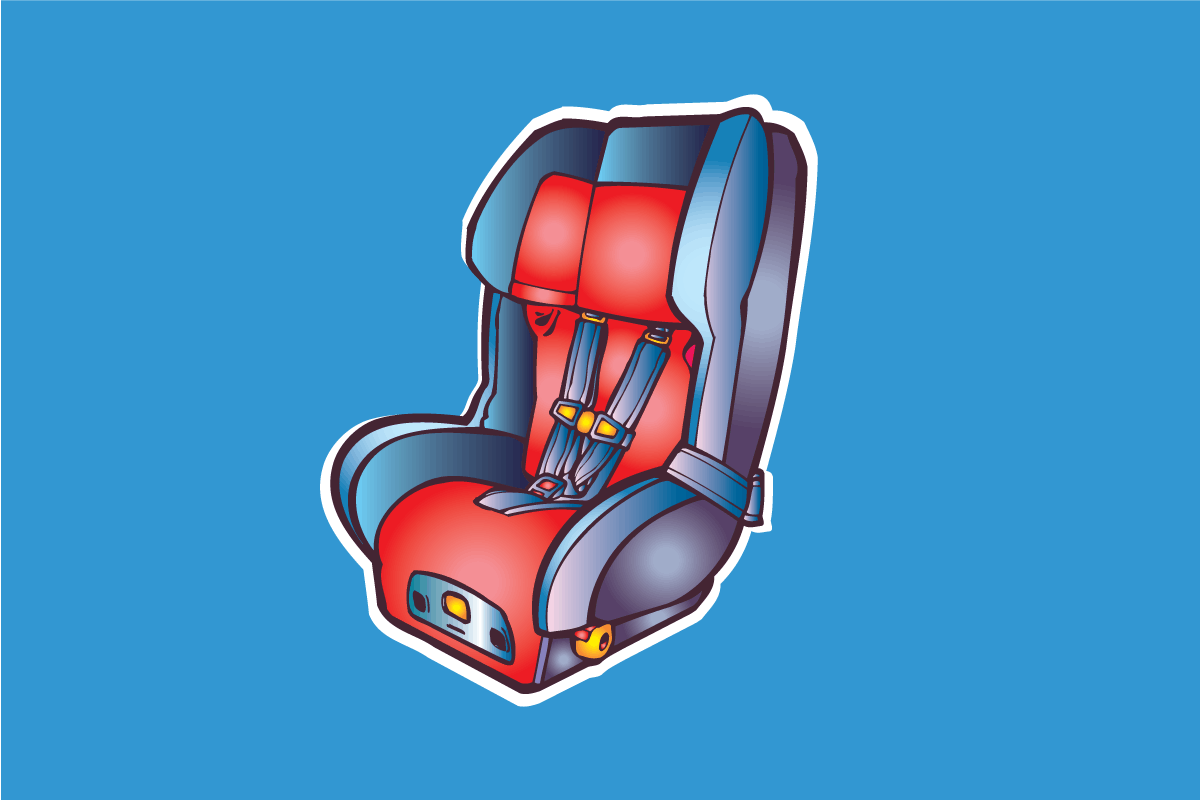Many parents seem to view the airplane car seat as a litmus test for good parenting. The FAA does not require any child under age 2 to fly in his or her own seat, nor any child of any age to fly in a car seat. But somehow, parents who don't put their kids in car seats (or worse, fly with lap infants) are reckless, selfish travelers who are better off staying home.
Is that a fair assessment of parents who choose not to bring a car seat on the plane? Air carrier flights are safe. Really safe.
For example, the National Transportation Safety Board (NTSB), which tracks accidents for all types of US transportation, recorded 34,678 transportation fatalities in 2013. Airline fatalities accounted for just 9 of those deaths, which resulted from two air carrier accidents. In 2011 and 2012, there were zero fatal airline accidents. Given an average of roughly 650 million passenger embarkments on US air carriers each year, the risk of death in an airplane accident is incredibly small.
Those arguing for car seats on airplanes, however, are more concerned about preventable injury during turbulence. Such injuries are slightly more common than aircraft accidents, but are still remarkably rare.
The Federal Aviation Administration reported that between 2004 and 2013, there were 153 passengers injured by turbulence. To put that in perspective, there are 149 seats on a roomy configuration of a 737. The number of injured passengers on US flights due to turbulence over a ten year period would just slightly overfill that plane. Nearly 30,000 commercial flights embark each day in the US. In other words, passengers on commercial airlines are injured at an astonishingly low rate.
Crew member injuries complicate this picture of turbulence injury. From 2004-2013, there were 168 crew injuries aboard US carrier flights – roughly the same as passenger injuries, but across a much smaller population. It's possible that the injury rate is so much higher for crew members because they are either not wearing seat belts or standing.
We know that fatal air carrier accidents are extraordinarily rare, that air carrier turbulence accidents are only slightly more common, and that crew members are injured more frequently than passengers. The higher turbulence injury rate for flight crew members suggests that wearing seat belts, or at least sitting, does prevent some turbulence injuries.
What we don't know is whether a car seat would provide an additional measure of safety over seat belts. The injury rates on airplanes are so low that there is not a large enough sample to compare the safety of seat belts and car seats. There is, however, plenty of data available to draw that comparison in cars.
In 2008, economist Steven Levitt found that for children ages 2-6, car seats were not measurably more effective than seat belts in preventing injury or fatality. In 2015, Lauren Jones and Nicholas Ziebarth replicated Levitt's study and found the same results.
It is possible that, because airplanes behave differently than cars, car seats might be differently effective on planes than in cars. A turbulence accident, for example, is much different than a vehicular accident because there is no impact. The typical turbulence injury is the passenger who hits the bulkhead, not who is thrown forward in the plane. It is possible that the harness restraints in car seats might prevent more upward movement than lap belts.
Given the incredibly low risk of in-flight injuries, the question of whether or not to bring the car seat on the plane is less of a flight safety question and more of a destination safety question. Even if you are convinced by Levitt's and others' findings about car seat use for children over age 2, you probably still want a car seat at your destination, given that it's required by law in most states.
What's the best way to get a car seat to your destination?
Bringing your car seat on the plane
Having a car seat on the plane might make your flight a bit more pleasant. Your child won't be falling out of the seat, or learn how to unlatch the seat belt and start running down the aisles. If your child is accustomed to falling asleep in the car seat, he might take a long nap on the flight.
Just know that the presence of a car seat ensures neither complete safety nor a smooth flight. The moment of turbulence might also be the moment you picked the baby up to nurse or soothe. Your child may be moderately safer in the car seat when on the plane, but in the rush to get on the plane you may not install it correctly, negating that safety benefit.
Assuming that you correctly install the seat (and are therefore more skilled than this author), you will have done so in the window seat. If traveling with two parents, that means your child will invariably want the parent in the aisle seat.
Checking your car seat
Here's the argument typically offered against checking your car seat: Car seats get handled as well as other luggage, and in some cases, baggage handling is akin to an accident. Your car seat was shipped from somewhere (a distribution center, a re-seller, often in a simple cardboard box with little other packaging) and sustained all the bumps along the way. It's difficult to prove that your car seat will be just as effective after a short stay in a cargo hold followed by a trip through baggage carts and belts, but car seats are built to withstand much bigger damage.
What is well-documented, however, is that by checking a car seat you risk aesthetic damage. If you've spent a lot of extra money on that seat, damage to the upholstery will be expensive to repair, and not all airlines will replace damaged baggage.
Sending a car seat to your destination
If traveling to visit family, consider just shipping an inexpensive car seat. All car seats sold in the US, no matter their price, are required to meet the same safety standards. The difference in price does not make the seat safer, but the upholstery or cushioning might be more appealing to kids, or more likely, their parents.
If your child is only going to be using the seat for a small portion of the time, a $50 car seat for his grandparents' vehicle can save you a lot of time and energy. And if shipping the car seat means you have a free hand for a carry-on suitcase, you'll break even in just one trip without baggage fees. If staying in a hotel, you can usually ship a car seat directly, though keep in mind some hotels add a charge for large packages.
The Verdict
I am not an expert on car seat safety, nor an economist computing extensive risk-benefit analyses. (I hope Emily Oster will tackle the data about car seats and airplanes in an upcoming project!) As Oster argues in her excellent "Expecting Better", my aim here is not to tell you what you must do when traveling with a toddler, but rather to present a more accurate picture of the risks involved in either choice so that you can make a more reasoned decision.
Based on my review of the pros and cons, my inclination is to fly seat-less. You may weigh the positives and negatives differently than I do, and therefore come to a different conclusion. I'll point out that it's rare to see families with three or more children lugging car seats around the airport. I often look to larger families to check my own overly anxious, first-timer behaviors. I suspect car-seat-plane panic is one of the many ways unseasoned parents fret over extremely unlikely dangers.
Perhaps the larger takeaway here isn't whether or not to use a car seat, but how to think about risk with our children – and what we lose when we're trying so hard to avoid risks. We take risks when we feed our children their first hard foods. We take risks when we let them crawl up the stairs unsupervised. We take risks when we travel with kids in strollers. We take risks when we travel with kids in cars. But we accept all of these risks because they bring with them potentially huge rewards: the joy of watching those tiny teeth chomp their first carrots, the sense of accomplishment when reaching the top step, the adventure of traveling to and exploring a new place.
In any activity, no matter how mundane, risk is involved. What's left to each of us to decide is how much risk we're willing to tolerate. For me, the joy of watching my husband and son read side by side on the plane, after first watching them, unencumbered, chasing each other through the airport, is worth that risk.



